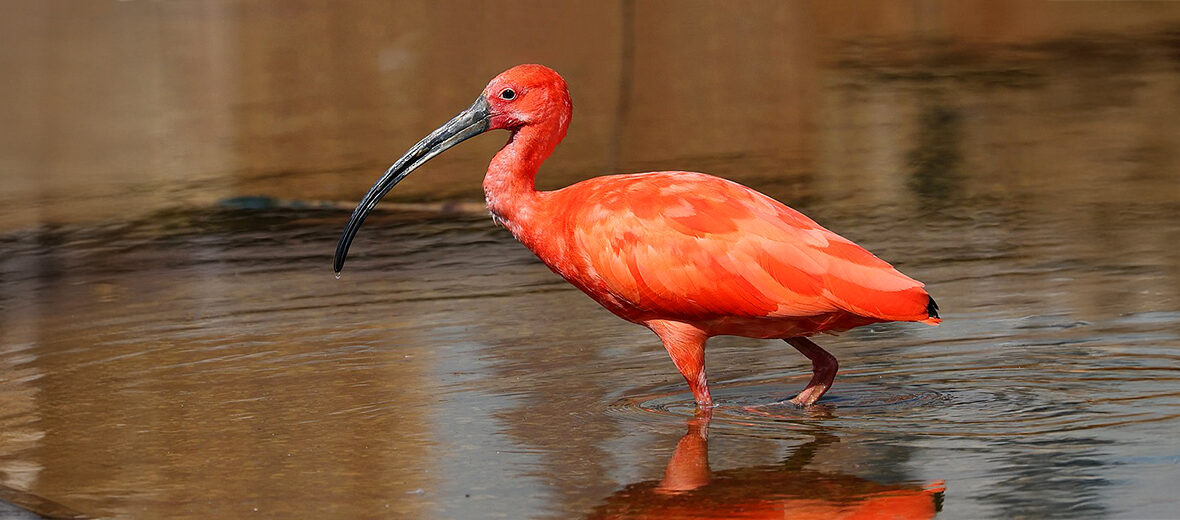
The scarlet ibis, aka red ibis or guará (from the Tupi–Guarani language), is 1 of the 2 national birds of Trinidad and Tobago. The other being the Cocrico. There are 27 recognized species of ibis. These birds face no major threats, sans water pollution and land pollution, and habitat loss. The IUCN lists these birds as Least Concern due to their abundant numbers. There population is decreasing though.
First the Stats…
Scientific name: Eudocimus ruber
Weight: Up to 3.1 lbs.
Length: Up to 25 inches
Wingspan: Up to 21 inches
Lifespan: Up to 20 years
Now on to the Facts!
1.) The biological classification of Eudocimus ruber is in dispute. Traditional Linnaean taxonomy classifies it as a unique species, however some scientists have called to reclassify it as a subspecies of the American ibis species, along with its close relative, the American white ibis.
2.) These birds were first described by Carl Linnaeus in 1758. They were initially given the binomial nomenclature of Scolopax rubra (the name incorporates the Latin adjective ruber, which translates to “red”), the species was later designated as Guara rubra, and ultimately designated as Eudocimus ruber.
3.) The juvenile scarlet ibis’ have a mixture of grey, brown, and white feathers. As they grow, a steady diet of red crustaceans produces the scarlet coloration; similar to flamingos.
4.) Their color change occurs during their second molt, right around the time they first begin to fly.
5.) These ibis’ are migratory and capable of long distance flight.
But wait, there’s more on the scarlet ibis!
6.) They tend to prefer wetlands, other marshy habitats, mud flats, shorelines, and rainforest habitats.
7.) Nests are built on a platform and are basically just a loose collection of sticks.
Did you know…?
The scarlet ibis is the only recognized wading bird with red coloration in the world. Bear in mind that while flamingos are wading birds as well, they are not red, but rather pink.
8.) They tend to roost in leaf canopies, primarily preferring the handy shelter of young waterside mangrove trees.
9.) During courtship the male will engage in a variety of mating rituals like preening, shaking, bill popping, head rubbing, and high flying.
10.) Females undergo up to a 6 day gestation (pregnancy) that yields up to 5 eggs that hatch in up to 23 days.
But wait, there’s still more on the scarlet ibis!
11.) Their diet consists of crustaceans, insects (such as scarab beetles, water bugs, and more), worms, and fish.
12.) Being social and gregarious, these ibis’ dwell in flocks of up to 30 or more individuals. However, flocks can often congregate into large colonies consisting of several thousand individuals, especially during migrations.
13.) Large cats, birds of prey, and snakes all prey on these ibis’.
14.) American author James Hurst composed a popular short story entitled “The Scarlet Ibis” in 1960.
Now a Short Scarlet Ibis Video!
Be sure to share & comment below! Also, check out the Critter Science YouTube channel. Videos added regularly!

Want to suggest a critter for me to write about? Let me know here.
Some source material acquired from: Wikipedia & IUCN
Photo credit: Clément Bardot



